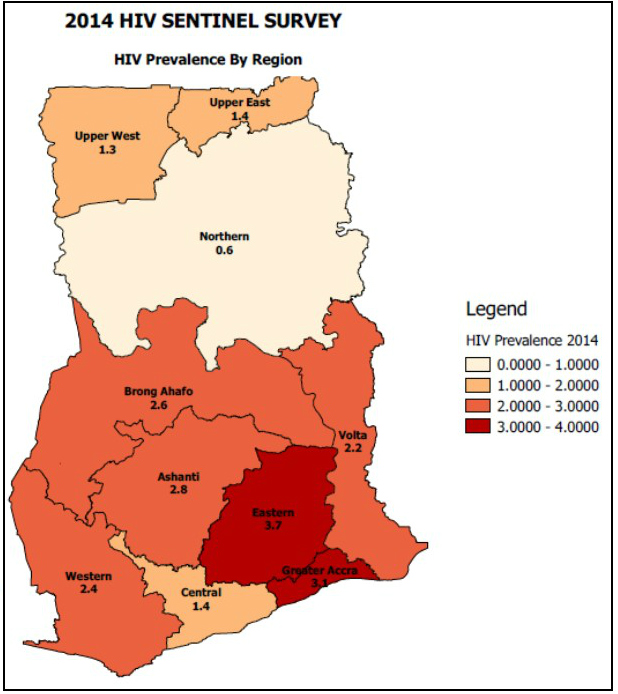HIV/AIDS in Ghana
Ghana is characterised by the UNAIDS classification scheme as having a low-level generalized HIV epidemic with HIV prevalence that consistently exceeds 1% among pregnant women. Sexual transmission remains the major mode of HIV transmission in Ghana. The majority of infections (72%) occur among the general, low risk populations. Prevalence is consistently higher among women than among men in all age groups (2014 HIV Estimates in Ghana: 56% female, 44% male).
DHS 2014 reports a HIV prevalence of 2.0%. However, there are pockets of higher prevalence rates among Key Populations (KP), namely :
- Men having sex with men (MSM): 17.5% and their female partners. MSM are one of the target groups of Ghana AIDS Commission, a Principal Recipient of the Global Fund.
- Female sex workers (FSWs): 11.1%. Under the Global Fund financing, FSWs are targeted by Ghana AIDS Commission and ADRA.
- Prison inmates: 2.3%. PPAG, a Principal Recipient of the Global Fund, provides HIV prevention activities for inmates of all 43 prisons in Ghana.
- Most-at-risk youth (15-24 years),
- Certain workers (miners, uniformed services, transport workers), and
- Vulnerable groups such as young boys and girls and female porters.
Four regions (Greater Accra, Eastern, Ashanti and Western Region) are disproportionally affected by the epidemic. They comprise 58% of the country’s population but include 75% of people living with HIV in Ghana as a whole. The four regions also contain the hot spots for female sex workers and men who have sex with men.
(Click map to enlarge)
Since 2003, when less than 1 in 10 women and men had ever been tested, there has been a consistent increase in the number of men and women who did an HIV test. According to DHS 2014, it is now 43% of the women and 20% of the men who got tested and received their result. This achievement is largely attributable to the scale up to now 2,335 testing sites (2009: 793).
In spite of all achievements, the 2014 Ghana Epidemiological and Impact Analysis highlights three risk factors of concern:
- Low comprehensive knowledge of HIV with little increase over time;
- Multiple Sexual Partnerships on the increase among men and
- A declining trend in condom use especially among men. Among men and women with multiple partners, only 11% of women and 19% of men indicated that they used a condom at last intercourse.
Additionally, the underlying health and community systems continue to require strengthening: People living with HIV (PLHIV) and KPs continue to face stigma and discrimination.

